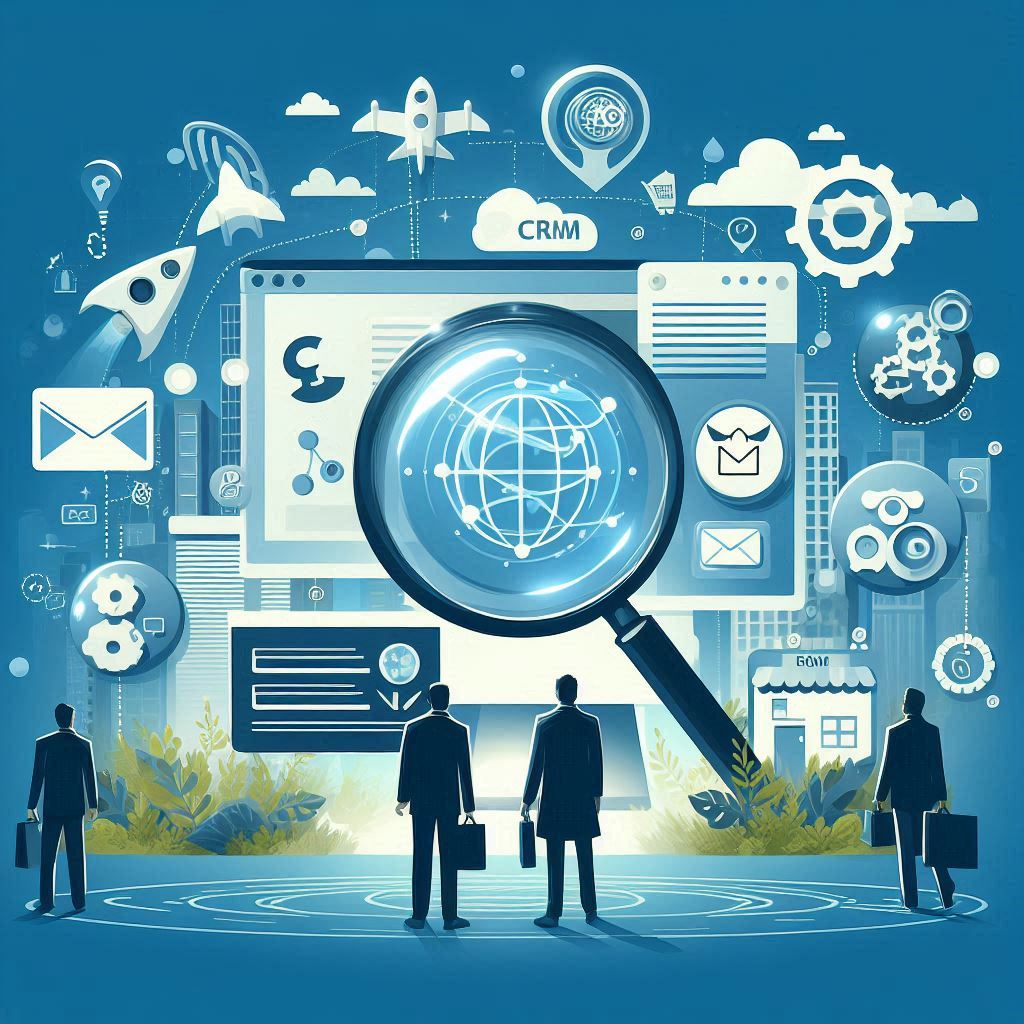
A Customer Relationship Management (CRM) system can transform customer service operations by centralizing, automating, and optimizing how businesses manage customer interactions. With the right CRM tools and features, businesses can enhance customer satisfaction, improve response times, and deliver more personalized experiences. This guide will explore how a CRM system can revolutionize customer service operations, outlining key features and tools that streamline processes and improve customer interactions.
1. Centralized Customer Information
One of the core benefits of a CRM system is the ability to centralize customer data, providing a 360-degree view of each customer. This centralized access enhances customer service operations in several ways:
a. Complete Customer Profiles
- Unified View: A CRM aggregates all relevant customer data, such as contact information, purchase history, support tickets, and preferences, into a single profile. This ensures that every team member has complete, up-to-date information.
- Contextual Understanding: When a customer reaches out for support, the agent can quickly access their history and context, reducing the need for customers to repeat themselves and allowing for faster issue resolution.
b. Interaction History
- Cross-channel Visibility: CRMs track all interactions across email, chat, phone, and social media, giving customer service agents insight into previous conversations and ongoing issues. This helps agents respond more effectively and build stronger customer relationships.
2. Automation of Customer Service Tasks
CRMs help automate routine tasks, freeing up customer service agents to focus on higher-level issues that require human intervention. Automation tools reduce errors, increase efficiency, and ensure timely responses.
a. Automated Ticket Creation and Routing
- Ticket Generation: Many CRMs can automatically generate support tickets from customer inquiries (email, chat, social media, etc.), ensuring that no request is overlooked.
- Intelligent Routing: Using predefined rules, CRMs can automatically route tickets to the most appropriate agent based on skill set, availability, or department. This ensures that customers are connected to the right representative faster.
b. Workflow Automation
- Automated Reminders and Escalations: CRMs can set automated reminders for agents to follow up with customers or escalate issues if they aren’t resolved within a certain timeframe, ensuring timely responses.
- Follow-up Sequences: After resolving a customer query, the system can trigger automated follow-up emails or satisfaction surveys to close the loop and gather feedback.
3. Personalization and Enhanced Customer Engagement
Personalized customer service is essential for building lasting customer relationships. CRMs enable businesses to deliver tailored experiences by leveraging customer data to provide more meaningful interactions.
a. Personalization Tools
- Tailored Responses: With a CRM, agents can access detailed customer preferences, purchase history, and previous interactions, enabling them to deliver personalized responses. For example, an agent can suggest relevant products based on the customer’s past purchases or preferences.
- Customized Offers: CRMs can be integrated with marketing platforms to offer personalized promotions, discounts, or loyalty rewards, improving customer satisfaction and driving repeat business.
b. Proactive Engagement
- Predictive Analytics: Some CRMs use AI and analytics to predict customer needs and behavior. For example, the system might flag a customer who is likely to churn, prompting customer service to proactively reach out with a retention offer or solution.
- Automated Updates: CRMs can automatically send updates (e.g., shipping notifications, order confirmations, appointment reminders) based on the customer’s preferences, creating a seamless experience without manual effort.
4. Multichannel Support and Integration
Customers now expect seamless service across multiple channels, including email, phone, live chat, and social media. A CRM helps consolidate and manage these various touchpoints, providing an integrated, omnichannel customer experience.
a. Cross-channel Communication
- Unified Inbox: A CRM integrates all communication channels into a single inbox for customer service agents, allowing them to view and respond to inquiries regardless of where the customer reaches out from.
- Consistency Across Channels: With a centralized system, customers receive consistent service across all channels. This prevents the frustration of repeating issues when switching between email and phone or live chat.
b. Social Media Integration
- Real-time Monitoring: CRMs can monitor social media platforms for mentions, direct messages, or comments related to the company, allowing agents to quickly respond to queries or complaints.
- Public and Private Engagement: Agents can handle public interactions (e.g., tweets, comments) and shift to private communication when needed, while keeping all records of the conversation in the CRM.
5. Real-time Analytics and Reporting
Data-driven insights from a CRM system allow customer service teams to improve performance and identify areas for enhancement. Real-time reporting tools provide visibility into key metrics, helping to drive better decision-making and improve service quality.
a. Performance Monitoring
- Agent Performance: CRMs provide dashboards that track individual agent performance, including response times, ticket resolution rates, and customer satisfaction scores. This helps managers identify top performers and those who need additional support or training.
- Customer Service KPIs: CRMs generate reports on customer service key performance indicators (KPIs), such as first response time, average resolution time, ticket volume, and customer retention rates, to gauge overall service efficiency.
b. Customer Feedback and Satisfaction
- Customer Satisfaction Surveys: Many CRMs allow businesses to send automated customer satisfaction (CSAT) surveys after resolving an issue, collecting feedback to improve future interactions.
- Net Promoter Score (NPS) Tracking: CRMs can track NPS surveys to measure customer loyalty and identify areas of improvement in customer service.
6. Collaboration and Knowledge Sharing
Effective customer service often requires collaboration between teams. CRMs foster better communication and knowledge sharing, helping agents work together more efficiently.
a. Internal Collaboration Tools
- Shared Notes and Tags: Agents can leave notes on customer profiles to document complex issues or resolutions. These notes are visible to other team members, ensuring consistent service and preventing redundant questions.
- Team Collaboration: Some CRMs include built-in collaboration features, such as internal messaging or team workspaces, allowing agents to ask for help or collaborate with colleagues on difficult cases.
b. Knowledge Base Integration
- Self-service Options: CRMs can be integrated with a knowledge base or help center, providing customers with self-service resources such as FAQs, troubleshooting guides, and instructional articles.
- Agent Knowledge Sharing: Agents can access a shared knowledge base to quickly find answers to common customer queries, improving first-call resolution rates and response times.
7. Enhanced Security and Compliance
In today’s data-driven world, securing customer information is crucial. CRM systems come with advanced security measures and compliance tools to protect sensitive customer data and maintain trust.
a. Data Encryption and Access Controls
- Secure Data Storage: CRMs use encryption and secure protocols to protect customer data. Only authorized personnel can access sensitive information, reducing the risk of data breaches.
- User Roles and Permissions: CRMs allow administrators to assign user roles and permissions, ensuring that employees only have access to data relevant to their job.
b. Regulatory Compliance
- GDPR/CCPA Compliance: Many CRMs offer tools to help businesses comply with data protection regulations, such as GDPR and CCPA. This includes features like data anonymization, customer consent tracking, and easy access to customer data deletion requests.
A CRM system has the power to transform customer service operations by centralizing data, automating processes, personalizing interactions, and providing real-time insights. By leveraging CRM features such as automation, multichannel support, and analytics, businesses can streamline customer interactions, improve response times, and ultimately enhance customer satisfaction. As customer expectations continue to rise, investing in a CRM system is critical for staying competitive and delivering exceptional service experiences.

